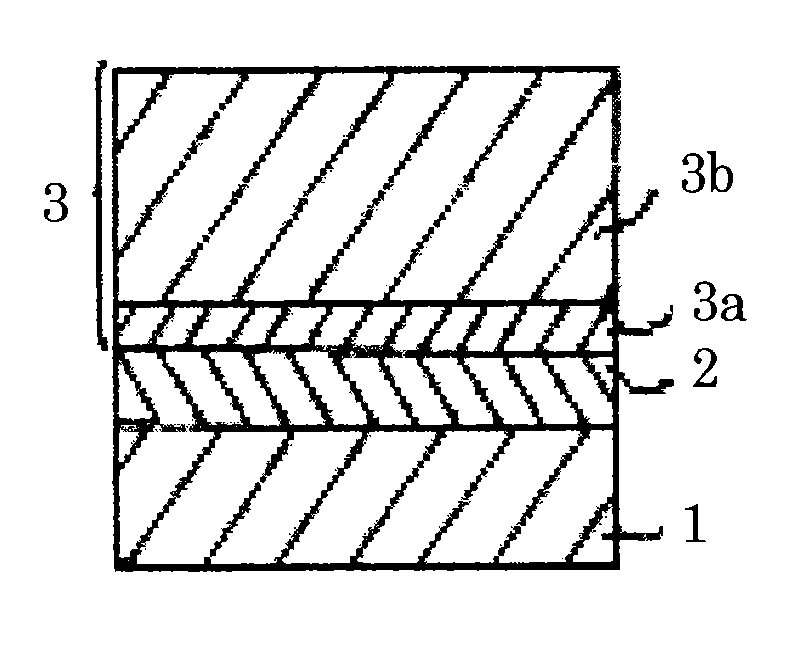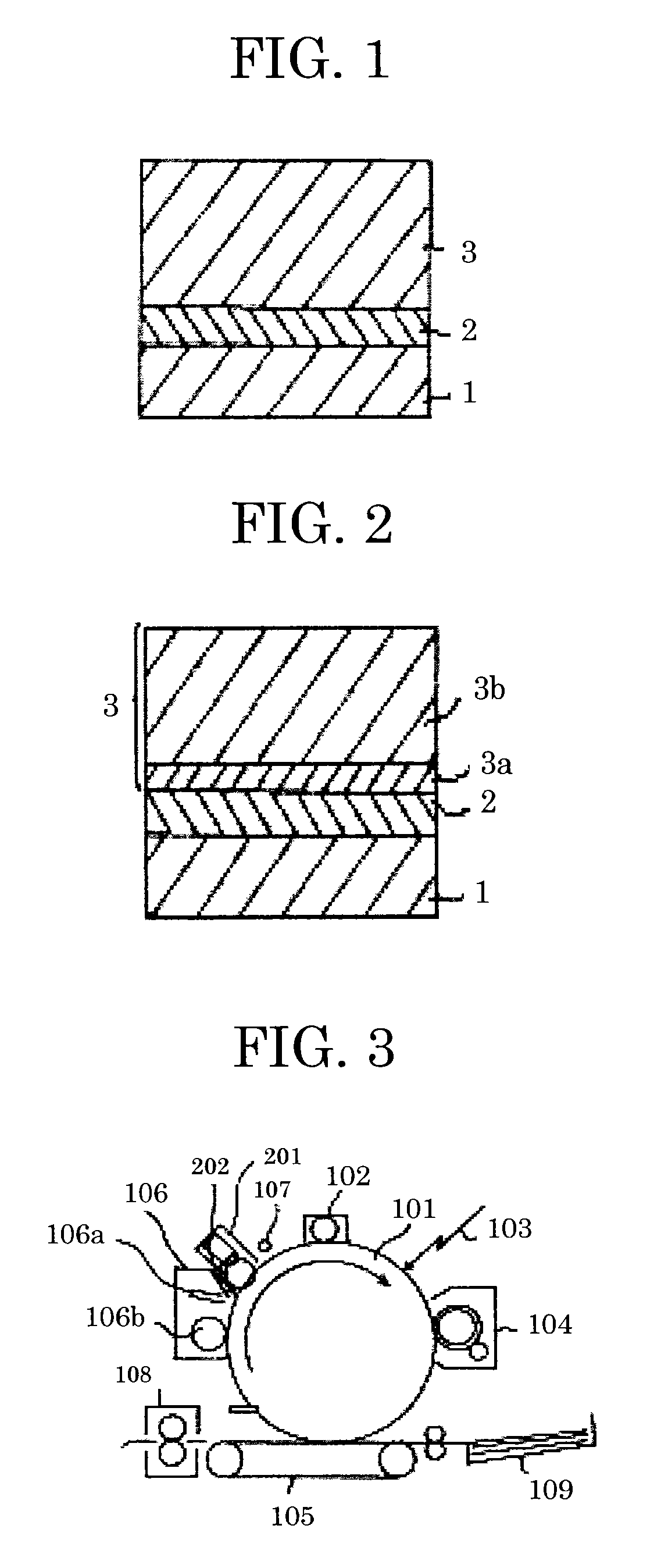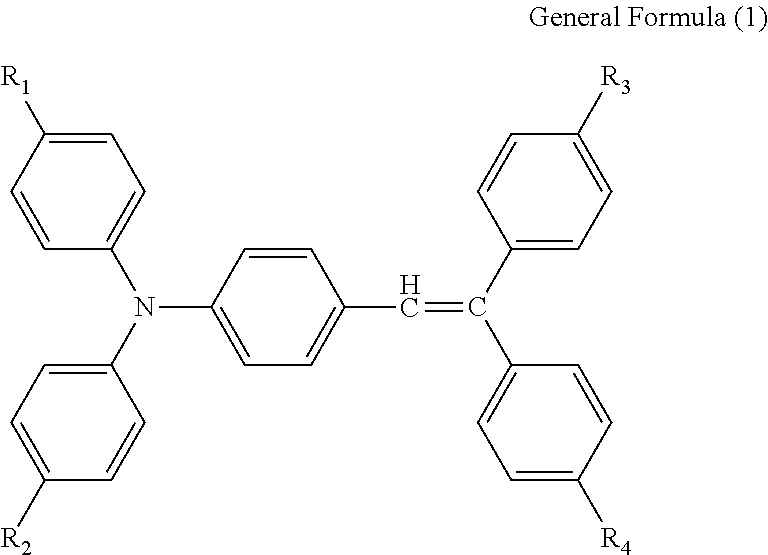Electrophotographic photoconductor, electrophotographic apparatus and process cartridge
a photoconductor and electrophotography technology, applied in the direction of electrographic process apparatus, corona discharge, instruments, etc., can solve the problems of limited improvement made on the resultant intermediate layer, increase in residual potential on the surface of the intermediate layer, and black spots on the image, etc., to achieve the effect of concealing pigments, increasing residual potential, and reducing the volume resistivity of the intermediate layer
- Summary
- Abstract
- Description
- Claims
- Application Information
AI Technical Summary
Benefits of technology
Problems solved by technology
Method used
Image
Examples
example 1
[0132]An electrophotographic photoconductor (photoconductor) of Example 1 was produced by sequentially forming an intermediate layer, a charge generation layer and a charge transport layer on an aluminum substrate according to the following procedure.
(Coating Liquid for an Intermediate Layer)
[0133]A 200 mL-mayonnaise bottle was charged with 18.7 parts of an inorganic pigment which is titanium oxide whose surface is treated with aluminum hydroxide (specific surface area: 85 m2 / g, content of titanium oxide: 83% by mass), 6.1 parts of a binder resin which is a polyamide copolymer (AMMAN CM8000 (product of TORAY INDUSTRIES, Co., Ltd.), a dispersion solvent which is a mixture of 70 mL of methanol and 30 mL of propanol, and 50 mL of a dispersion medium which is zirconia balls PTZ 0.6 mm in diameter. The resultant mixture was dispersed with a paint shaker for 15 hours. After dispersion, 35 mL of methanol and 15 mL of propanol were added to the bottle, followed by stirring for about 1 hour....
example 2
[0145]An electrophotographic photoconductor was produced in the same manner as in Example 1 except that the amount of the inorganic pigment for the intermediate layer was changed to 9.80 g (the volume ratio of the inorganic pigment: 30%). The intermediate layer was found to have a volume resistivity of 5.0×1012 Ω·cm.
example 3
[0146]An electrophotographic photoconductor was produced in the same manner as in Example 1 except that the amount of the inorganic pigment for the intermediate layer was changed to 22.9 g (the volume ratio of the inorganic pigment: 50%). The intermediate layer was found to have a volume resistivity of 6.0×1011 Ω·cm.
PUM
 Login to View More
Login to View More Abstract
Description
Claims
Application Information
 Login to View More
Login to View More - R&D
- Intellectual Property
- Life Sciences
- Materials
- Tech Scout
- Unparalleled Data Quality
- Higher Quality Content
- 60% Fewer Hallucinations
Browse by: Latest US Patents, China's latest patents, Technical Efficacy Thesaurus, Application Domain, Technology Topic, Popular Technical Reports.
© 2025 PatSnap. All rights reserved.Legal|Privacy policy|Modern Slavery Act Transparency Statement|Sitemap|About US| Contact US: help@patsnap.com



